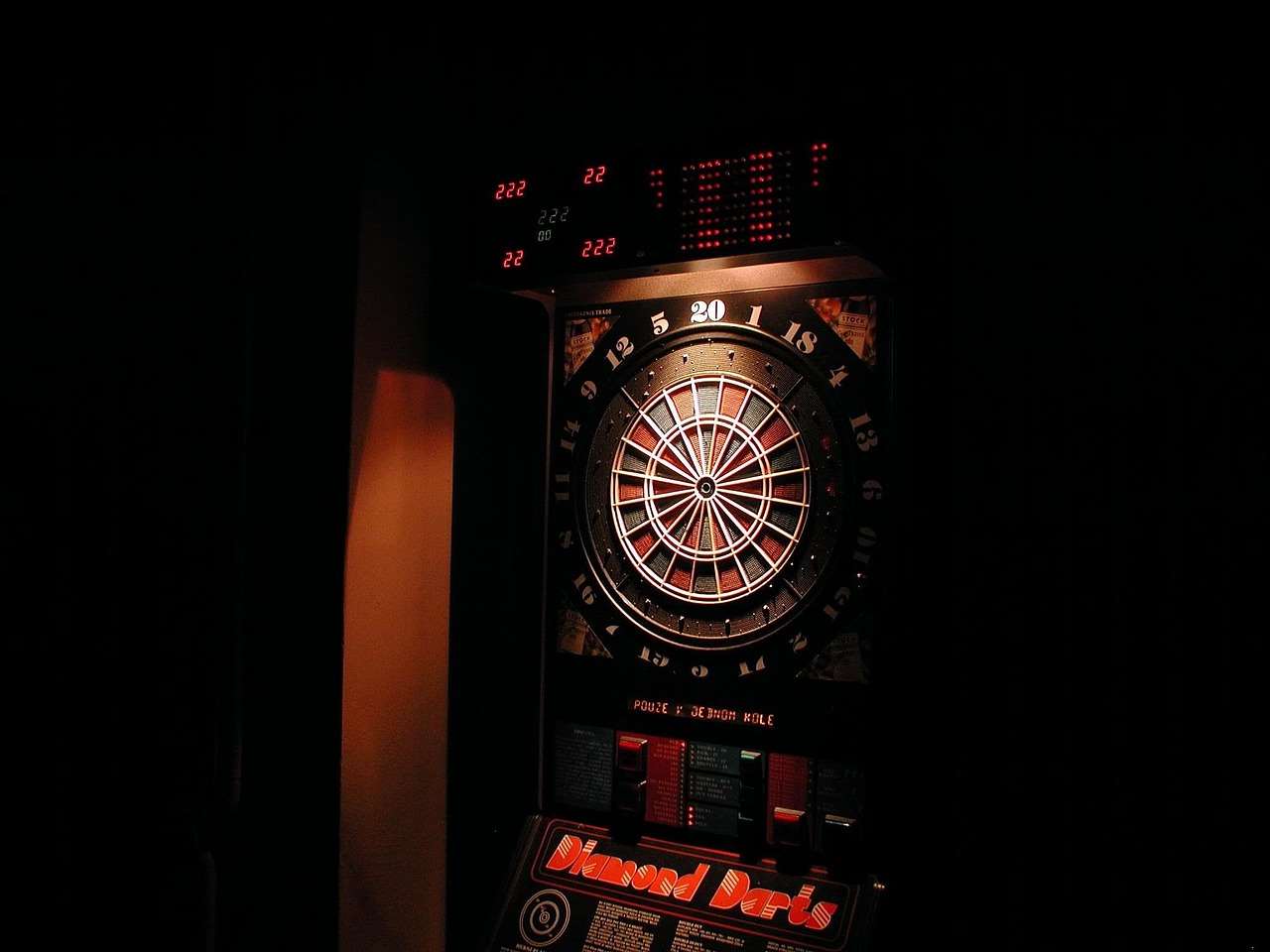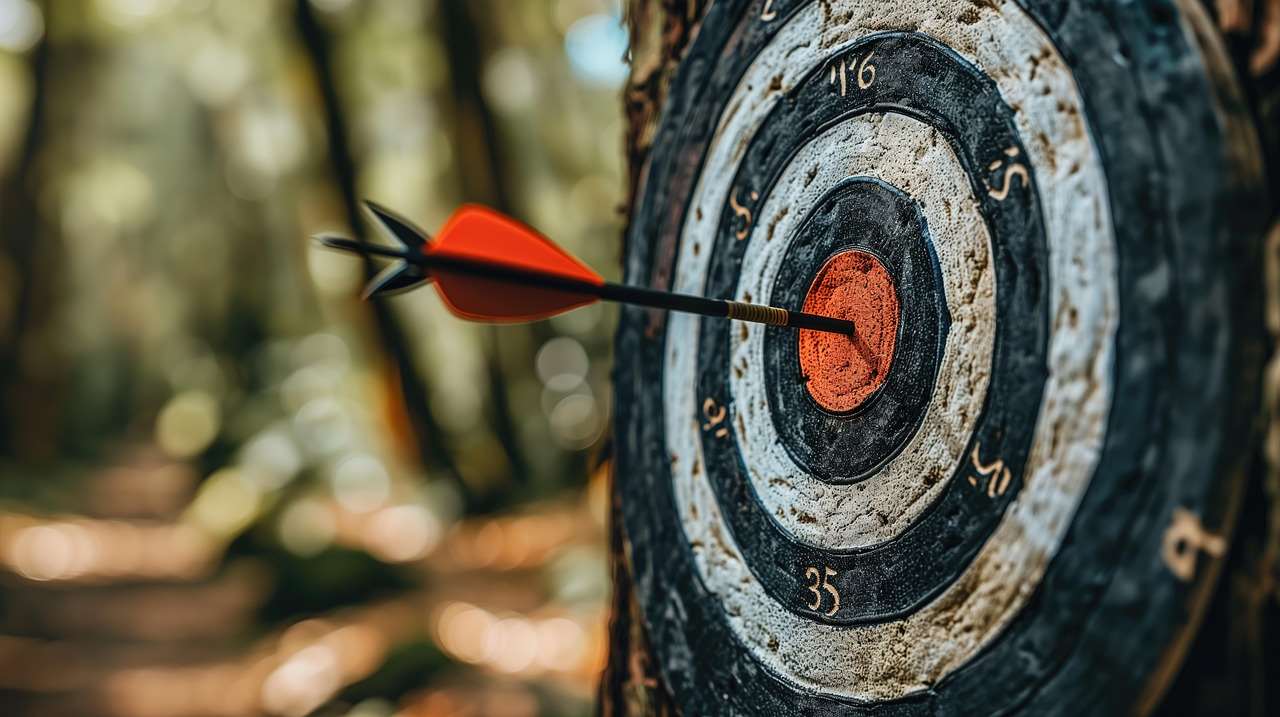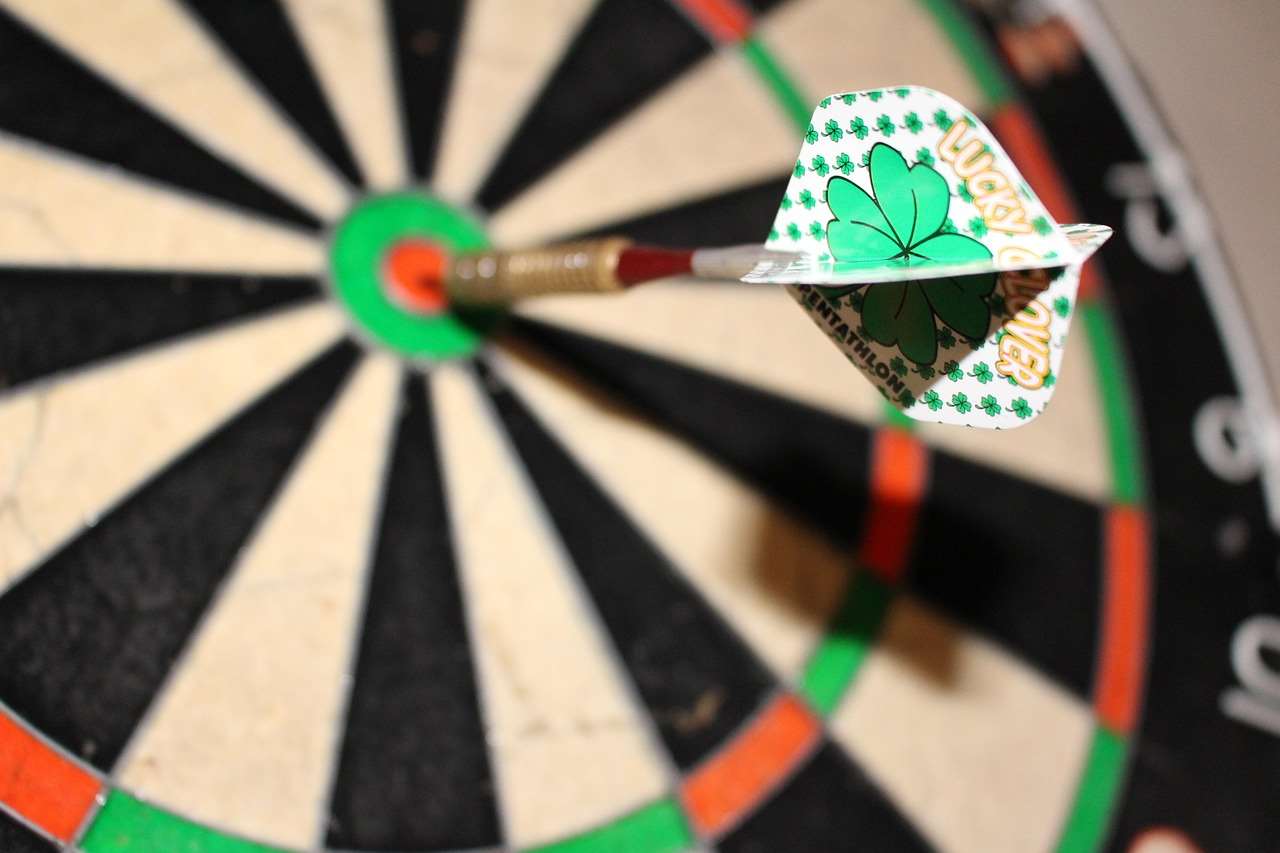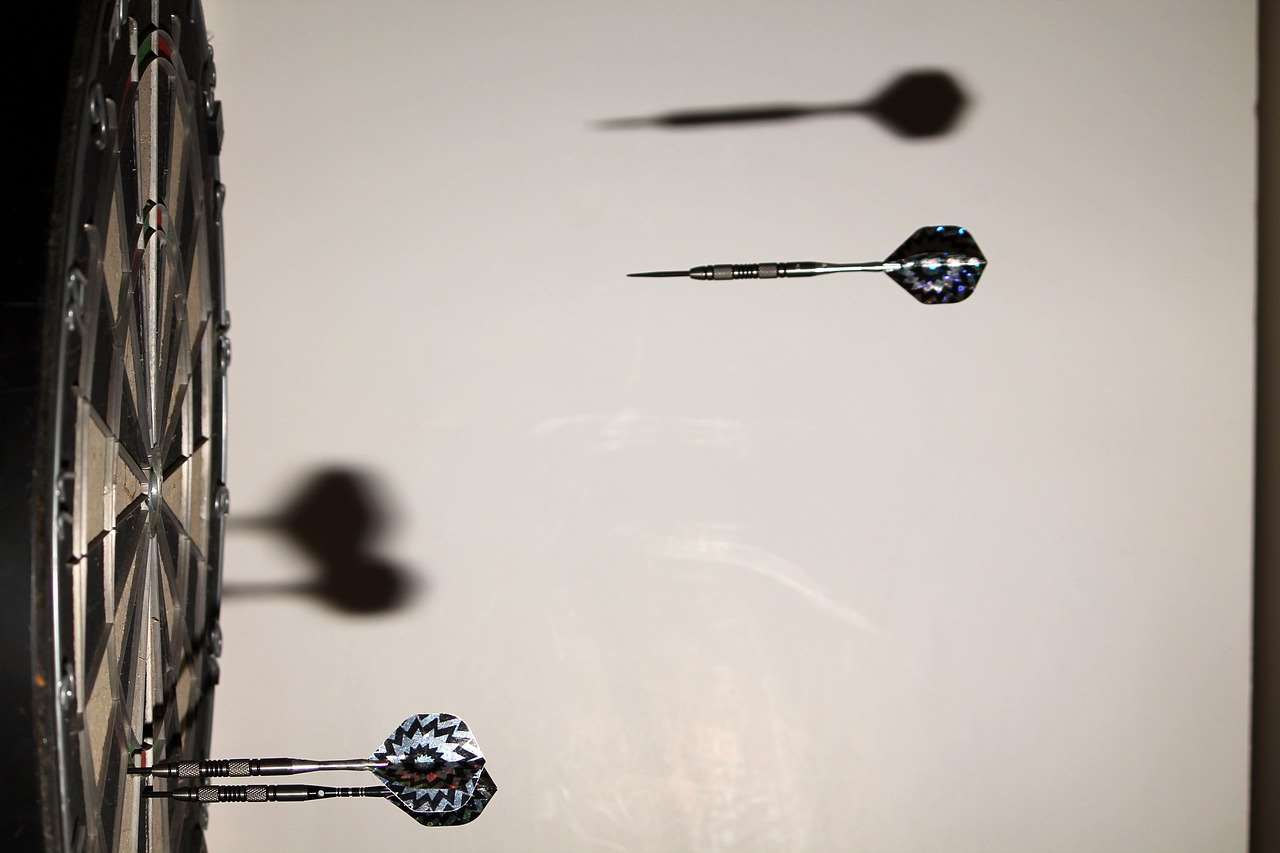Understanding the evolution of historical dartboard designs types reveals fascinating insights into the game’s rich past and its cultural significance. From rudimentary tree trunks to the standardized boards we know today, this article explores the key variations and influences that shaped the modern dartboard, covering materials, scoring systems, and regional adaptations.
⚠️ Still Using Pen & Paper (Of een schoolbord)?! ⚠️
Stap in de toekomst! De Dart Teller -app behandelt alle scoren, stelt kassa voor, en volgt uw statistieken automatisch. It's easier than you think!
Probeer de Smart Dart Teller -app gratis!Klaar voor een upgrade? Klik hierboven!
Early Forms of Dartboards: A Glimpse into the Past
The earliest forms of dartboards were far removed from the precisely engineered products we see today. In werkelijkheid, they weren’t even manufactured items at all. Imagine a time before dedicated dartboards existed. What did people use? The answer lies in the natural world.
Initially, targets were often sections of tree trunks. These natural targets presented an irregular surface, and players would simply aim for the center or any other arbitrarily chosen point. There was no standardized scoring system; the game was purely about accuracy and the challenge of hitting the chosen spot. The concept of **point values** for different sections of the target was still far off in the future.
Na verloop van tijd, these rudimentary targets evolved. Sections of wood might be marked or painted to create more defined areas, but the process remained largely unstandardized and highly localized. These early attempts at creating dartboard divisions were driven by a desire to add complexity and structure to the game.

The Evolution of Materials: From Wood to Sisal
The transition from natural tree trunks to manufactured dartboards involved a significant shift in materials. Early manufactured boards were typically made of solid elm wood. These boards were durable but prone to drying out, cracking, and requiring frequent soaking to maintain their integrity. This led to experimentation with other wood types and construction methods.
A major turning point came with the introduction of sisal fiber. Sisal, a natural fiber derived from the agave plant, offered several advantages over wood. It was more resilient, self-healing (the holes close up after the darts are removed), and provided a superior playing surface. The tightly packed sisal fibers allowed for consistent dart penetration and reduced bounce-outs. The adoption of sisal was a crucial step in the development of modern dartboard manufacturing.
Another material that was used, albeit less common, was clay. Clay dartboards, while providing a suitable surface for darts, were fragile and not practical for long-term use. You might want to check out some obscure dartboard games list to find different variations of dart games played on these boards.
Standardization and the “Clock” Dartboard
One of the most recognizable historical dartboard designs types is the “clock” of “London” dartboard. Its distinctive arrangement of numbers and scoring zones is now the international standard. But how did this particular design emerge?
The story often credits Brian Gamlin, a carpenter from Lancashire, England, with devising the layout in 1896. His design strategically placed the high-scoring numbers (20 En 19) adjacent to lower-scoring numbers (1 En 3 En 7 En 3 respectively), adding an element of risk and reward to the game. Hitting the wrong number could significantly impact a player’s score.
The Gamlin design wasn’t immediately adopted universally. Regional variations persisted, and different pubs and clubs often had their own preferred dartboard layouts. Echter, the inherent balance and challenge of the clock dartboard eventually led to its widespread acceptance and standardization.
Consider exploring dart games before 501 invented to truly appreciate the historical evolution of dartboard designs.

Regional Variations in Dartboard Design
Terwijl de “clock” dartboard eventually became the dominant design, various regional dartboard variations existed and continue to exist in some areas. These variations often reflect local customs and preferences, adding a unique flavor to the game.
- Yorkshire Dartboard: Smaller than the standard dartboard, with no treble ring and different scoring zones. It is known for its simplicity.
- Manchester Dartboard: Similar to the Yorkshire board, it also lacks a treble ring, but it features a smaller bullseye.
- Kent Dartboard: This is a unique and difficult variation. All even numbers are removed from the dartboard. This board is designed to increase the level of challenge in the game.
These regional boards demonstrate the diverse ways in which the game of darts has been adapted and enjoyed across different communities. It is essential to consider these localized dartboard preferences when researching the history of darts.
The Influence of Scoring Systems on Dartboard Design
The design of a dartboard is inextricably linked to its scoring system. As scoring rules evolved, dartboard layouts were modified to accommodate them. Bijvoorbeeld, the introduction of the double and treble rings significantly increased the complexity and skill required to play the game.
Before these scoring rings, the game relied primarily on hitting specific numbers or sections of the board. The addition of the rings created opportunities for higher scores and more strategic play. You might be able to find some more rare dart game instructions for older variations with different rings.
Even the bullseye has undergone changes over time. The initial bullseye was often a single point, but it later evolved into the current double bullseye (50 points) and single bullseye (25 points) configuration. These modifications were driven by a desire to refine the scoring system and create a more balanced and engaging game.

The Role of Manufacturers in Shaping Dartboard Design
Dartboard manufacturers have played a crucial role in standardizing and refining dartboard designs. Companies like Nodor and Unicorn have been instrumental in promoting quality and consistency in dartboard production.
These manufacturers have invested in research and development to improve the materials, construction, and overall design of dartboards. They have also worked to establish industry standards and promote the game through sponsorships and tournaments. Bijvoorbeeld, verkennen forgotten pub dart games might lead you back to manufacturers who once supported those games.
Their contributions have helped to ensure that dartboards are durable, accurate, and enjoyable to play on, regardless of skill level. De impact of manufacturers on dartboard design cannot be overstated.
The Modern Dartboard: A Refinement of Historical Designs
The modern dartboard is the culmination of centuries of experimentation and refinement. It represents a carefully balanced combination of functionality, aesthetics, and tradition. While the fundamental design has remained largely unchanged for over a century, ongoing innovations continue to improve the playing experience. You can see it as a natural product stemming from historical dart game variations.
Examples of these improvements include:
- Wire Technology: Thinner wires and staple-free bullseyes reduce bounce-outs and increase scoring potential.
- Sisal Treatment: Advanced treatments enhance the durability and self-healing properties of the sisal fibers.
- Number Rings: Improved materials and manufacturing processes ensure the number rings are securely attached and easy to read.
Even now, manufacturers and enthusiasts continue to research and develop new features for the dartboard.

Maintaining Your Dartboard: Tips for Longevity
Proper care and maintenance can significantly extend the lifespan of your dartboard, regardless of its design. Here are some practical tips to keep your board in top condition:
- Rotate the Board: Regularly rotating the dartboard distributes wear evenly and prevents excessive damage to specific sections.
- Keep it Dry: Avoid exposing the dartboard to excessive moisture, as this can cause the sisal fibers to swell and warp.
- Remove Darts Properly: Always remove darts with a twisting motion to minimize damage to the board.
These simple steps can help you to enjoy your dartboard for many years to come. To delve deeper into the topic, you can read more about history of darts games uk.
Future Trends in Dartboard Design
While the traditional dartboard design is likely to endure, there is always room for innovation. Some emerging trends in dartboard design include:
- Electronic Dartboards: These boards offer automated scoring and a variety of game options.
- Interactive Dartboards: Connected dartboards allow players to compete remotely and track their progress online.
- Customizable Dartboards: Manufacturers are offering more options for personalizing dartboards with custom colors, graphics, and logos.
These trends suggest that the future of dartboard design will be shaped by technology and personalization. These innovations reflect the enduring popularity of the game and its ability to adapt to changing times. Be sure to look into Darts varianten leuke spellen for new ways to integrate these innovations.

Conclusie
From humble beginnings as tree trunks to the precisely engineered sisal boards of today, the story of historical dartboard designs types is a testament to the enduring appeal of darts. We’ve explored the evolution of materials, the standardization of the “clock” dartboard, regional variations, the influence of scoring systems, and the role of manufacturers. Understanding this history enriches our appreciation for the game and its cultural significance. By rotating your board, keeping it dry, and removing darts carefully, you can extend its life and continue to enjoy this classic game. Consider researching different eras of dartboards like the victorian era dart games to enhance your knowledge. Ready to experience the history of darts for yourself? Find a local darts league or pub and start playing!
Hoi, Ik ben Dieter, En ik heb Dartcounter gemaakt (Dartcounterapp.com). Mijn motivatie was geen darts -expert - helemaal tegenovergestelde! Toen ik voor het eerst begon te spelen, Ik hield van het spel, maar vond het moeilijk en afleidend om nauwkeurige scores te houden en statistieken te volgen.
Ik dacht dat ik niet de enige kon zijn die hiermee worstelde. Dus, Ik besloot om een oplossing te bouwen: een eenvoudig te gebruiken applicatie die iedereen, Ongeacht hun ervaringsniveau, zou kunnen gebruiken om moeiteloos te scoren.
Mijn doel voor Dartcounter was eenvoudig: Laat de app de nummers afhandelen - het scoren, de gemiddelden, de statistieken, Zelfs checkout suggesties - zodat spelers puur kunnen richten op hun worp en genieten van het spel. Het begon als een manier om het probleem van mijn eigen beginners op te lossen, En ik ben heel blij dat het is uitgegroeid tot een nuttig hulpmiddel voor de bredere darts -community.